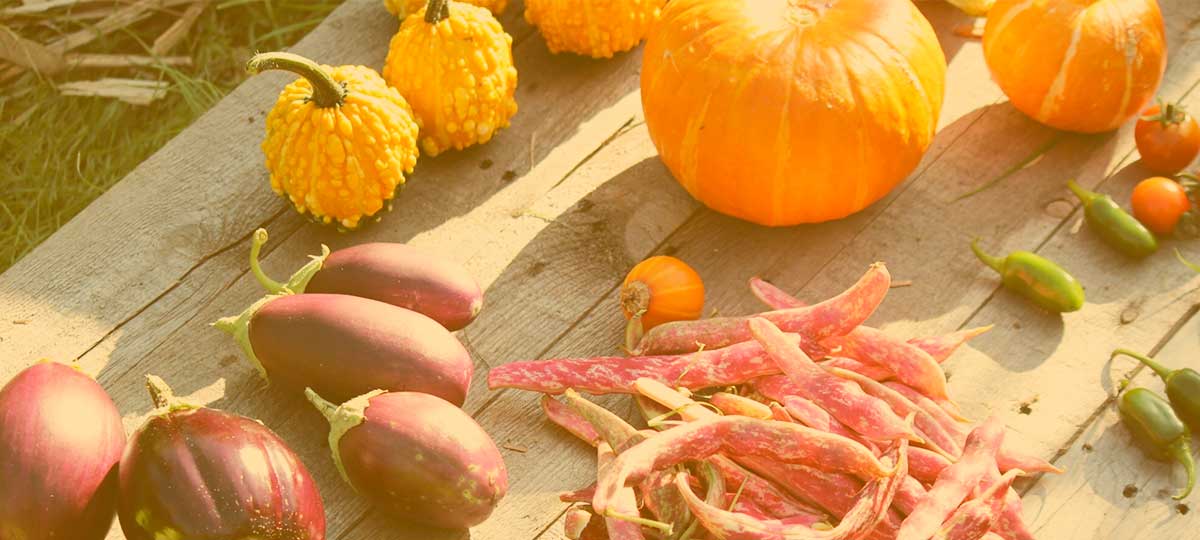Laura Roy on Living Entirely Off the Produce From Her Farm
By: Thomas De Moor
October 26, 2023 7 min read

Laura Roy is an X-Team Sales Director who's also a gardener on a mission: She wants to entirely replace her family's reliance on grocery stores with homegrown produce. In this interview, we discuss her gardening projects and progress toward that big goal.
I love your posts in X-Team's #club-permaculture Slack channel. From breeding mantes to salves for bee stings to incredible fruit and vegetable harvests from your garden, you've done so many interesting horticulture projects it's almost hard for me to know where to start. What gardening projects are you currently working on?
Thanks for saying that, Thomas! We've just recently completed a new building we're calling the Potting Shed. We'll use it to grow more seeds, hang herbs to dry, and to better track the volume of each crop that we're growing in a season.
We've also expanded our Back to Eden gardens, where we grow food using organic matter, wood chips, and cardboard. I've found this method one of the most passive and cost-effective ways to start a garden with great results.
You want to live entirely off the food from your farm. For a city boy like me, that sounds incredible (and very difficult 😅). What are you doing to make that possible, and how far are you in that journey?
It is very difficult. Gardening is all about perseverance, which is why I constantly have my kids help me. The act of gardening teaches you far more than just growing food. It teaches you resiliency, consistency, determination, ownership, and hard work.
Each year our efforts evolve to tackle this ambitious goal. The key, from my current viewpoint, is developing passive setups. For every new project that creates food, you have to consider the effort it's going to take to manage it. Here are the big initiatives we took over the last three years to tackle the big goal.
Year 1: Two big initiatives. First, we started our Back to Eden garden. We also converted a garage overhang into a minimal-input aquaponics system. While it took a few years to get the system balanced and build out the necessary microorganisms with beneficial bacteria, it's now a fairly passive system.
This greenhouse provides year-round growing opportunities. At any point in the year, we have the potential to grow a substantial amount of food. The video above from our Yourticulture YouTube channel gives you an idea of what aquaponics is. Yourticulture is all about how you need to change your thinking to live in a self-sustainable way, more aligned with nature.
Second, we also planted our first orchard with different varieties of peaches, apples, and pears. Fruit trees really are the gift that keeps on giving.
Year 2: All about expansion. We saw such great results from the Back to Eden gardening method that we decided to create another area, our Botanical garden. This is a space meant to attract beautiful pollinators, in which we're growing annual herbs that we now use for medicine. Things such as marshmallow, marvel of Peru, rosemary, sage, thyme, the list goes on. Having plants return each year means more growth with less physical input and time.
We also opened another area for our second orchard. Here we're growing more fruit trees with an overarching plan for permaculture designs. We have an incredible existing ecosystem. I believe it's not our job to change it, but to steward it. Permaculture methodologies represent that thought process.
We're also highly resourceful with our materials. For example, we took a large red oak that had fallen, split it down the middle, and used it as a raised bed where we planted over fifty strawberry plants.
Year 3: Grow more, produce more. If you want to eliminate your dependency on grocery stores, you have to grow with the future in mind. Crops like asparagus will produce shoots for years. Yes, it takes about three years before they're a good harvestable size, but you only need to plant them once.
This year, we focused on dedicated raised-bed growing spaces. One bed dedicated to one crop. One for asparagus, one for potatoes, one for onions and garlic, and so on. These beds help me track how much of each staple crop we can grow for seasonal consumption.
When I first started gardening, I grew these super rare tomato varieties and crops my family never eats, like eggplant. Reflecting back, that was a mistake. Start by growing the core staple crops your family consumes.
We also tested out growing mushrooms by way of plugs in logs. This is another passive crop to grow that will produce for years! And lastly, nut trees. Most nut trees like black walnut, hickory, and pecans are packed with rich proteins. They will feed you, your family, and your squirrel neighbors for many generations.
Next year, we're testing out another form of growing by way of hydroponics through the Bato System.
What vegetables/fruits/fungi do you currently harvest? It's probably also good to understand approximately where you live, what the climate is like there, and how many acres you work with.
It might be easier to tell you what we don't grow! Jokes aside, we grow many staples like carrots, onions, garlic, swiss chard, radishes, arugula and other leafy greens like celery, tomatoes, green beans, corn, artichoke, brussel sprouts, kale, and so on.
We grow a lot, but we grow for the season. That's really important to remember. We live in zone seven, which means we get the four seasons, but have a milder winter. We're on roughly forty acres but on a sloped terrain, so right now, we're only growing on maybe one or two acres. Growing near a good water source is critical, so until we find a way to get water dispersed passively across the property, we're trying to grow close to our house.
As mentioned earlier, we're also growing mushrooms this year. Some of my wonderful X-Team colleagues sent me a mushroom starter kit with three different varieties of mushrooms for my birthday this year. An amazing surprise. Can't wait to get those going!
Also, I love multi-use plants that can be used for food but also for medicinal purposes. Your common herbs like rosemary, mint, sage, thyme, and oregano are all great things to plant. The same with rhizome plants like ginger and turmeric.
And lastly, foraging. If you look closely enough and learn how to identify plants, you'd be surprised how many natural resources you can harvest for both food and medicine. Plantain and lamb's quarter are particularly common.
So impressive. How do you learn all this? Do you have a good resource for someone who's interested in permaculture or gardening and wants to take the first step, but doesn't know how to start?
I invest disposable resources on books. Knowledge is freedom in a lot of cases. Reading equips you with the insight to become a subject matter expert, but you have to put those learnings into action to reinforce them with first-hand experience. So, invest in books in all areas of interest.
As far as the infrastructure projects go, my husband is the rockstar. Over the last few years, he has learned timber framing and helps build any new fence, building, or general structure for our livestock with freshly sawn lumber from fallen trees on our property.
Given your deep involvement, what have you learned from nature that can apply to your life as a whole? Did you come across any important lessons that we may have forgotten in our modern, fast-moving, and consumerist society?
The biggest thing I could tell you is to accept adversity, for when adversity is present, you are stretched. And when you stretch, you grow. I heard this from a mentor years ago, as he coached me on staying positive in the sales arena, but boy does it ring true with nature and homesteading.
Think about nature for a minute. I believe in God, and I believe He architected every aspect of our world perfectly. There are checks and balances in nature. Even death and decay are necessary:
- Wildfires that seemingly destroy the forest actually regenerate it.
- The potash that you're left with fertilizes the soil.
- Insects are not a pest but just another part of the food chain.
- Plants some see as weeds can actually be densely nutritional resources.
I think it's also important to note that observation is typically more important than activity. Go outside and take some time to look around. What do you see? What do you hear? How do things interact with one another? Watch how plants grow. They have a unique way of visually displaying what they need, you just need to be patient and observant.
And yes, we live in an increasingly busy world, full of distractions, full of demands and pings on our phones, but every day, there's an opportunity to slow down. Live in timelessness, even if only for a few minutes. The impact is profound, I promise.
TABLE OF CONTENTS



